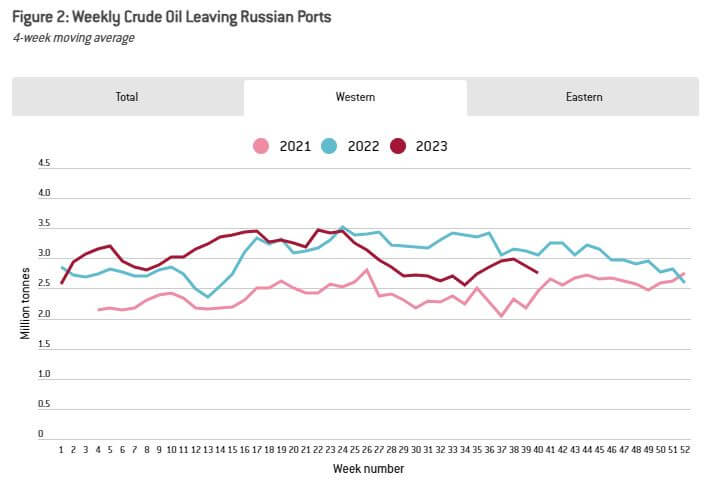Russia’s Arctic shipping route, the Northern Sea Route, set a new record for shipments in 2023. Oil tankers shipped 1.5 million tonnes of crude along the route out of a total of 2.1 million tonnes in shipments.
One end of the Northern Sea Route is located on Russia’s Arctic coast north from St Petersburg. At the other end, shipments pass through the Bering Strait, between Alaska and Siberia.
This allows the Russians to make shipments directly between Arctic ports and East Asia. Indeed, the first shipment from 2023 brought LNG plant components from Busan, South Korea to a Siberian port for the construction of the Arctic LNG-2 project.
The Northern Sea Route has become increasingly attractive to Russia for geopolitical reasons. There have been EU discussions about closing the Danish straits to Russian crude oil exports, most recently in November 2023.
Currently, some 60% of Russia’s oil exports passes by Scandinavia into the North Sea. “Almost none” of the shipments abide by the price cap set by the EU, the G7 and Australia. And indeed, the quantity of shipments in 2023 shows the ineffectiveness of the sanctions.

The Northern Sea Route expansion should be kept in perspective. The 75 cargo shipments that transited the route last year only began when the ice had sufficiently cleared in June and could only continue until the onset of winter weather in November.
The Northern Sea Route tonnage of 2.1 million is no comparison with the 245 million tonnes Russia ships through the Baltic Sea each year.
But it gives further insight into why Russia has no interest in phasing out fossil fuel extraction, given that on this count at least, the warming of the far north is favourable to the Russians.
Sign Up To Our Free Newsletter